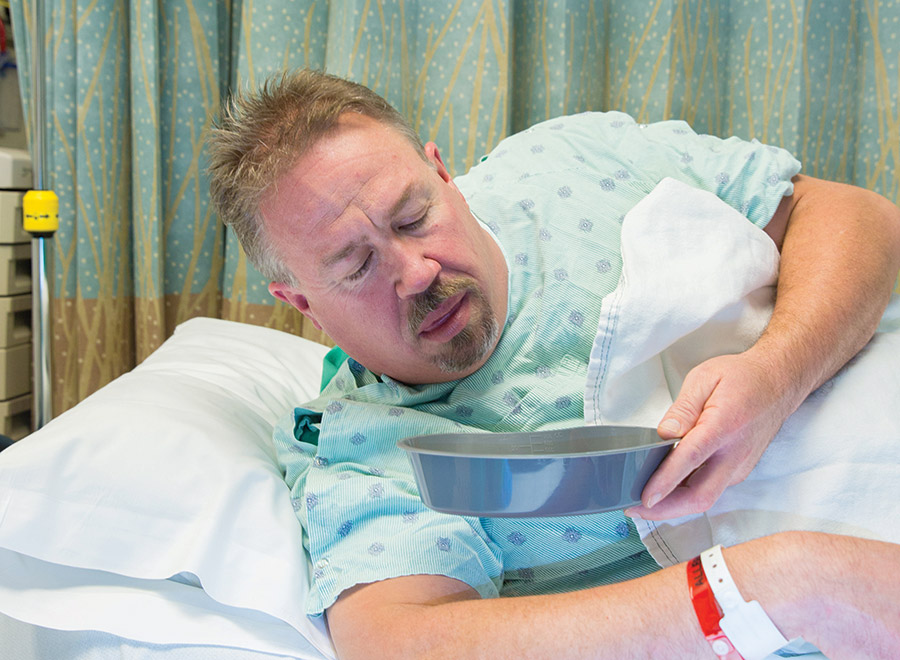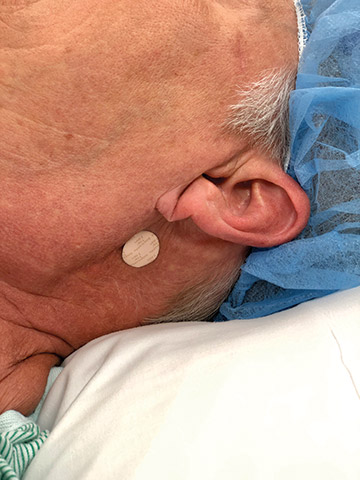Lengthier procedures lead to longer exposure to anesthesia gases, and volatile anesthetics and nitrous oxide can cause nausea. Of course, when the surgeries are extensive and painful, it's critical for the anesthesia provider to adequately
control pain. The analgesic approach plays a role here. Opioids increase a patient's risk of experiencing PONV, and with larger cases, opioid use can be quite high if other multimodal methods are not utilized to optimal effect.
Any procedures involving opioids are known to cause nausea and vomiting, and they can also delay gastric motility. Your anesthesia providers should look to collaborate with surgeons whenever possible to determine local anesthetic options that
can further decrease opioid use and lessen the risk of PONV. For instance, I frequently use IV versions of acetaminophen or ibuprofen prior to surgery. If these options are unavailable, I use the appropriate oral dose.
PONV is not only a patient satisfaction issue; it's safer in the long run for your patients to have controlled nausea. Straining from vomiting can tear sutures, which can lead to bleeding, return trips to the OR or even infection. For plastics
procedures such as tummy tucks, straining is deleterious to the sutures used to join abdominal muscle and close the large incisions. You also don't want a patient who just underwent a complex abdominal surgery to start vomiting or bearing
down, because they can rupture the sutures in their long and vulnerable incision.
Setting realistic expectations with patients about how they'll feel after surgery alleviates their anxiety and lets them know you're personally vested in their care. I'm upfront and honest with mine in discussing anticipated pain levels and
nausea control. Patients do expect some discomfort when they're in recovery. However, I put them at ease by letting them know I'm using all the tools at my disposal to keep them as comfortable as possible.
Sharing what works
As a former bedside nurse, I understand the challenges faced when receiving a patient experiencing inadequately controlled nausea. That's why it's important to regularly engage with PACU nurses about the effectiveness of your PONV prevention
protocols.
Lengthier procedures lead to longer exposure to anesthesia gases, and volatile anesthetics and nitrous oxide can cause nausea.
They'll be fully aware of the number of patients who arrive in recovery feeling nauseous and the steps they take to ensure patients' nausea is well-controlled before discharge. Calling patients at home after surgery to see if they have any
concerns regarding their PONV management adds a personal touch to their care and provides another mechanism of feedback that can help you fine tune your practices as needed.
Although neither of the facilities I work for collect data specific to incidences of PONV, I know rates are low because I keep in regular contact with the PACU nurses and patient coordinators to ensure I'm providing the highest level of care.
One facility distributes patient surveys to gauge overall satisfaction with their experience. If there's an issue, we will surely know about it. That's important, because it's essential to keep your facility's word-of-mouth impact in mind.
Controlling PONV not only keeps patients happy, it directly impacts the health of your business and your facility's reputation.
To continually strive for improvement in PONV prevention, talk to your anesthesia providers about their choice of antiemetics. Anesthesia professionals individualize patient care as much as possible, and keeping open communication is key to
building a better understanding of what practices are effective. Ultimately, it's up to anesthesia professionals to choose the optimal PONV prevention strategy based on the needs of their patients. However, collaboration among surgical
leaders, anesthesia providers, surgeons and staff ensures everyone is applying effective interventions. OSM
.svg?sfvrsn=be606e78_3)


.svg?sfvrsn=56b2f850_5)